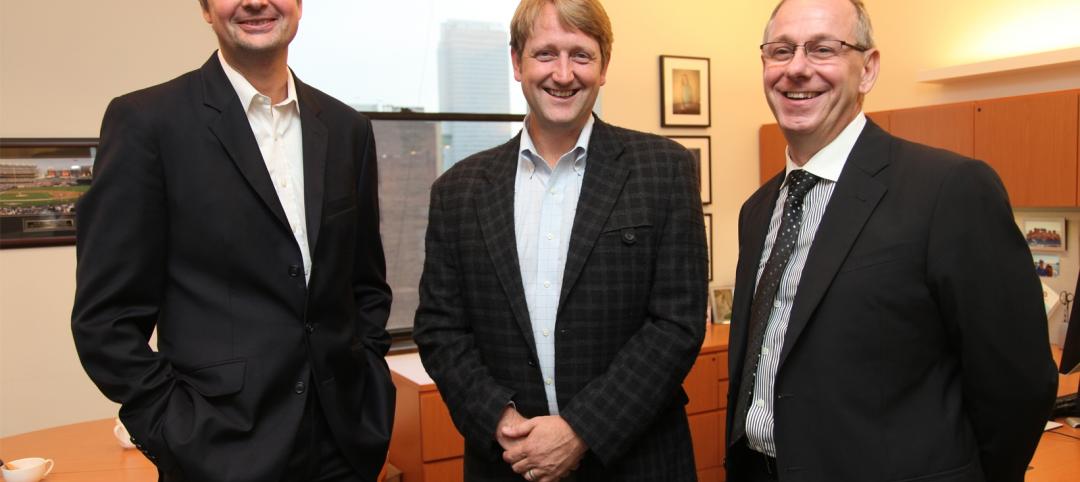BD+C: Why do you state that cities are “our greatest invention”?
Edward Glaeser: Cities matter because they magnify mankind’s greatest strengths. They help form the chains of collaboration and creativity that are behind everything that mankind has been able to do. Mankind’s greatest talent is the ability to learn from each other, and we learn more deeply and thoroughly when we’re face-to-face.
BD+C: You state that massive construction projects—stadiums, light rail, convention centers, etc.—cannot “stem the tidal forces of urban change.” Should mayors and city councils in declining cities just give up?
EG: I believe that there’s been a tendency to confuse cities with their structures. Cities are their people. There are places that need more structures, and they need fewer barriers to development. When you have artificial barriers, such as unrealistic height restrictions and burdensome environmental impact reports, there are tremendous costs from that. Declining areas have too many structures compared to the number of people.
The terrible thing about this strategy is that cities like Detroit need to invest in their children, so that they have the skills to survive in this economy. New sports arenas and the like are enormously expensive and distract city councils and mayors from the core business of providing a brighter future for the children of their cities through education.
BD+C: Detroit has become the poster child of the declining city. Do you have any advice for Mayor Dave Bing?
EG: If you look across the older colder-climate cities, the cities that have come back are those with the largest share of college degrees. Only 12% of Detroit adults have college degrees. I think Mayor Bing is being realistic about Detroit’s prospects. He’s a businessman. I would push him most on leveraging power of things like charter schools, and on top of that, fighting back against some of the regulations that still make it difficult to do business in the city. I was there recently, and there was a woman who was trying to start a business, a food truck, and she couldn’t get a permit because of regulations.
BD+C: “Poverty is usually a sign of a city’s success,” you write.
EG: The key point is that, throughout much of the world, cities attract poor people with the promise of jobs, cheap transportation, relatively affordable housing, and social services. That’s something cities shouldn’t be ashamed of.
BD+C: You advocate reducing the home mortgage interest deduction, which you cleverly call “a sacred cow in need of a good stockyard.” Aren’t you swimming in shark-infested waters here?
EG: It’s the job of an academic to do that. But there are two signs that this is being considered. The Administration’s federal housing finance reform package came out with a clear message that we should not be encouraging everyone to become a homeowner; and in the President’s budget, he sees a restriction on the amount of deductions you could take. The plan I like is to lower the upper limit of $1 million by $100,000 a year over several years.
BD+C: You comment on policies for “aesthetic interventions,” as espoused by the urbanist Richard Florida, versus “urban basics,” like public safety and good schools. Could you expand on that?
EG: Good public art is good, if it’s cheap. But you can’t tell a mayor that you really should have a public arts program, rather than getting the schools in order and having a well-functioning police department. The arts can’t be seen as something that’s going to trump the basics.
Take the case of Bilbao. That museum certainly generated a lot of tourism, but how many jobs were created? Bilbao is the one such project that hit the jackpot. How many others were subsidized, as in Sheffield, England, where the National Centre for Popular Music closed the year it opened. These projects come and go, with massive subsidies, and you have to be wary of them.
BD+C: What about the balkanization of our school districts? Should school funding be more equalized, no matter where the child lives?
EG: This is obviously a huge issue. The most helpful things we have seen so far have been the charter schools. Being an economist, I think competition among schools is the best way to keep upwardly mobile families staying in the city. The great urban virtues are competition and entrepreneurship, and that’s what we’ve not done with our public schools, which are large public monopolies. And because cities do attract poor people, for many reasons, it shows how hard it is to move that dial, even when, as in Chicago and New York and Washington, D.C., you have some of the best people working on the problem.
BD+C: You also state that immigration is “essential to urban success.” That’s hardly a popular sentiment in many parts of the U.S.
EG: Immigration is absolutely essential to the success of our cities. The case is easiest to make for H-1B visas, where we get skilled workers who are going to add energy to the economy, pay more in taxes than they’re going to take out, and who are not going to cause social problems. We should be enabling more people who are skilled and want nothing more than to work in America. Cities are good for immigrants and immigrants are good for cities. BD+C
Related Stories
| Jan 11, 2012
Mortenson starts construction of Rim Rock Wind Project
Renewable energy contractor to build 189-megawatt wind project in Sunburst, Mont.
| Jan 9, 2012
FGM Architects acquires SRBL Architects
The firm reviewed gaps in each of the markets and identified a need in the municipal market for stronger police facility design expertise as well as additional project management and design expertise for this market.
| Jan 9, 2012
Shawmut appoints Les Hiscoe COO and EVP
In his new role, Hiscoe will focus on developing the Company’s field services divisions; national business in retail, hospitality, gaming, and sports venues; Tri-State business in academic and healthcare; sales and marketing; and human resources
| Jan 9, 2012
Thornton Tomasetti acquires green consulting firm Fore Solutions
International engineering firm launches new building sustainability practice.
| Jan 9, 2012
METALCON International 2012 announced
METALCON 2012 is scheduled for Oct. 9-11 at the Donald E Stephens Convention Center, Hall A, Rosemont, Ill.
| Jan 9, 2012
Lutron appoints Pessina president
In his 35-year career with Lutron, Pessina has acquired broad experience in the engineering, quality assurance and manufacturing areas.
| Jan 9, 2012
A new journey for KSS Architects co-founder
Kehrt's legacy of projects include Rutgers University's Biomedical Engineering Building, the renovation and expansion of Cornell University School of Hotel Administration, the recent new campus center at The Richard Stockton College of New Jersey and Princeton Township's Municipal Complex.
| Jan 8, 2012
TCA releases The Construction of Tilt-Up
The newest publication from the TCA is the second in a planned trilogy of resources covering the architecture, engineering and construction of Tilt-Up
| Jan 8, 2012
WHR Architects promotes Joel Colwell, AIA, to principal
With over 30 years of experience, Colwell has managed large-scale, complex projects for major healthcare systems as well as challenging smaller renovations and additions — all with notable success.

















